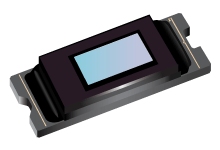'Perfect storm' creates electronic component supply chain shortages
We’re in the midst of what could be called a ‘perfect storm’ that is creating significant supply chain shortages for electronic components. Margaret Cunha, Digi-Key Electronics’ Director of Regional Supply Chain Solutions, explains.
Even before the COVID-19 pandemic, supply chains were beginning to show signs of shortages, and the far-reaching effects of the global pandemic starting in 2020 slowed or shuttered production of these essential components for days, weeks or even months at a time.
Now, with the development and roll-out of several COVID-19 vaccines, industries are once again beginning to ramp up production, and the demand for electronic components has skyrocketed. Here’s a look at what’s causing pain points, and how purchasing professionals can navigate shortages.
Demand ramps up
Demand for components in nearly every industry is ramping up, all at the same time, including automotive, smartphone, medical and IoT markets, which need increasingly larger numbers of components for finished products.
For example, electric vehicle engines use as many as 22,000 multilayer ceramic capacitors (MLCCs) each, and smartphone manufacturers alone use approximately 1.5 trillion MLCCs, accounting for 50% of worldwide production.
Furthermore, Gartner reports the IoT market is expected to grow by more than six times from $212bn in 2018, to $1,319bn in 2026. IoT products like smart home thermostats, doorbells, alarm systems, cameras, appliances, fitness equipment, and more, need sensors and multiple components to run.
While this increased demand certainly puts pressure on suppliers, it is overall a positive sign of recovery.
Suppliers try to keep up
At the same time as demand is increasing rapidly, supply has experienced a significant strain due to the pandemic and exacerbating circumstances.
One major factor that affects many manufacturers is reduced staffing capacity in facilities, in order to allow for social distancing and other workplace COVID prevention policies.
Additionally, freight is taking longer to move, across all industries and countries, for similar reasons, as well as fewer available commercial flights, and port issues that are causing delays in product transfers and receipt of materials, including, of course, the recent blockage of the Suez Canal, which is predicted to create a ripple effect in global trade for several weeks.

Systemic issues such as under-investment in 8” fabs has resulted in a real struggle to ramp up production. When there is not significant investment in the early stages of a fab, the supply chain can be impacted many years down the road. Unfortunately, there was an under-investment in this very standard size years ago, which is causing significant issues right now.
Climate change has also created increasingly extreme weather patterns that are putting strains on local areas, such as the drought in Taiwan, which is forcing some manufacturers to truck water in, creating delays that could continue into June 2021.
There have also been several major factory fires affecting commodity production, from the Asahi Kasei Micro (AKM) and Renesas Electronics plant fires in Japan, and the PANJIT International factory fire in Kaohsiung, Taiwan. All of these factories were critical to the production of specific oscillators, semiconductors and chips, and could take several months to get back up and running.
Despite these challenges, suppliers are doing their best to keep up with demand, working around the clock to get components into the hands of engineers around the world.
Weathering the storm
The good news is that many distributors like Digi-Key predicted this sharp spike in demand several months ago, and proactively invested in inventory, while working closely with suppliers to expedite orders to ensure enough product is on hand for customers, despite worldwide shortages.
With a wide breadth of components, including 2.6 million in-stock products from more than 1,700 manufacturers, working with global distributors like Digi-Key assures customers that they will likely be able to find what they need among the 11.8 million available products.
Additionally, Digi-Key is in constant contact with its suppliers, has long-term relationships with key manufacturers and has invested in significant inventory to help customers weather the ‘perfect storm’, now and into the future. Digi-Key has also developed a suite of digital solutions to help customers integrate technology and a digital strategy for faster communication and better use of data for planning and procurement. Digi-Key provides three digital solutions including API (Application Programming Interface), EDI (Electronic Data Interchange), and punchout, which all help customers to maximise efficiency and speed, and improve operations through automation. For more information, Digi-Key has published a free Demystifying Digital Transformation for Procurement eBook.








